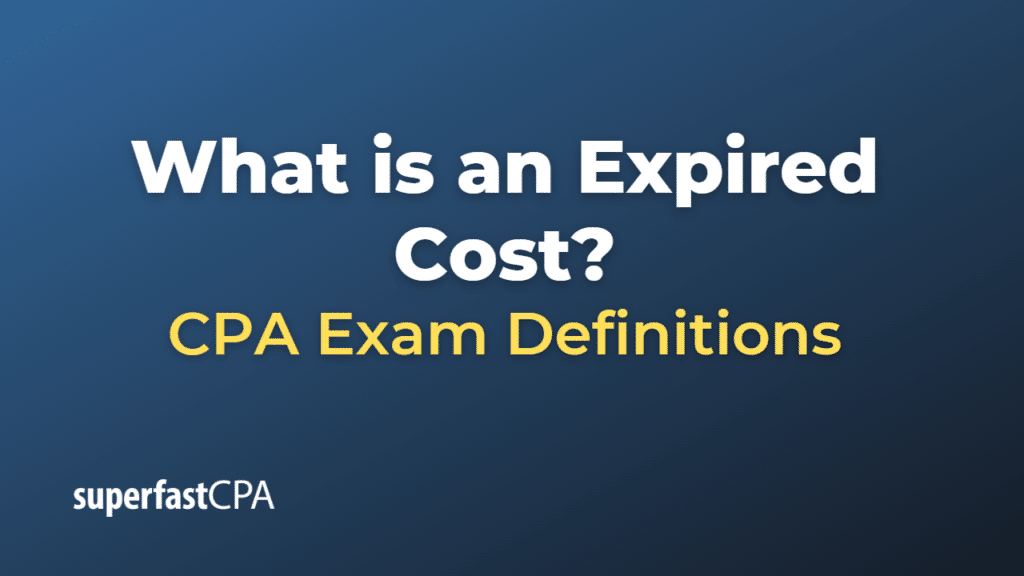Expired Cost
An “expired cost” is a term used in accounting to denote a cost that has already been used up or whose future economic benefit is not measurable. In other words, it’s a cost that no longer has potential to provide any value or revenue to the company.
One of the most common examples of expired costs is the cost of goods sold (COGS). When a company sells a product, the cost of producing that product is considered an expired cost because it has already generated its value through the sale, and there’s no future benefit expected from it.
Another example is operating expenses such as rent, utilities, or salaries. Once these costs have been paid, they are considered expired because they were necessary for maintaining the business operations for that period, and they won’t provide any future economic benefit.
Expired costs are important for calculating a company’s net income. The income statement of a company includes all the revenue earned during a specific period, and from that revenue, all the expired costs (or expenses) are deducted to arrive at the net income.
Example of an Expired Cost
Let’s consider an example involving a furniture manufacturing company.
Suppose in the month of May, the company spends $100,000 on raw materials such as wood, fabric, and hardware to manufacture furniture. It also incurs $50,000 in labor costs, and $20,000 in factory overhead costs (utilities, rent, etc.), totaling $170,000 in production costs for the period.
During the same month, it sells furniture worth $200,000. After the furniture is sold, the production costs of $170,000 associated with those sales become expired costs. They’ve served their purpose (contributed to the creation of the products that were sold), and will not provide any future economic benefit.
From a financial accounting perspective, these costs (now referred to as Cost of Goods Sold or COGS) are subtracted from the company’s revenue for the period:
- Revenue: $200,000
- COGS (Expired costs): -$170,000
- Gross Profit: $30,000
This $30,000 is the gross profit, which represents the company’s earnings after considering the costs directly related to the production of the furniture. Please note, other operating expenses would still need to be deducted to determine net income.
So, in this example, the $170,000 in production costs are considered “expired” because they have already been used up in the process of producing and selling furniture, and won’t provide any future benefits to the company.













